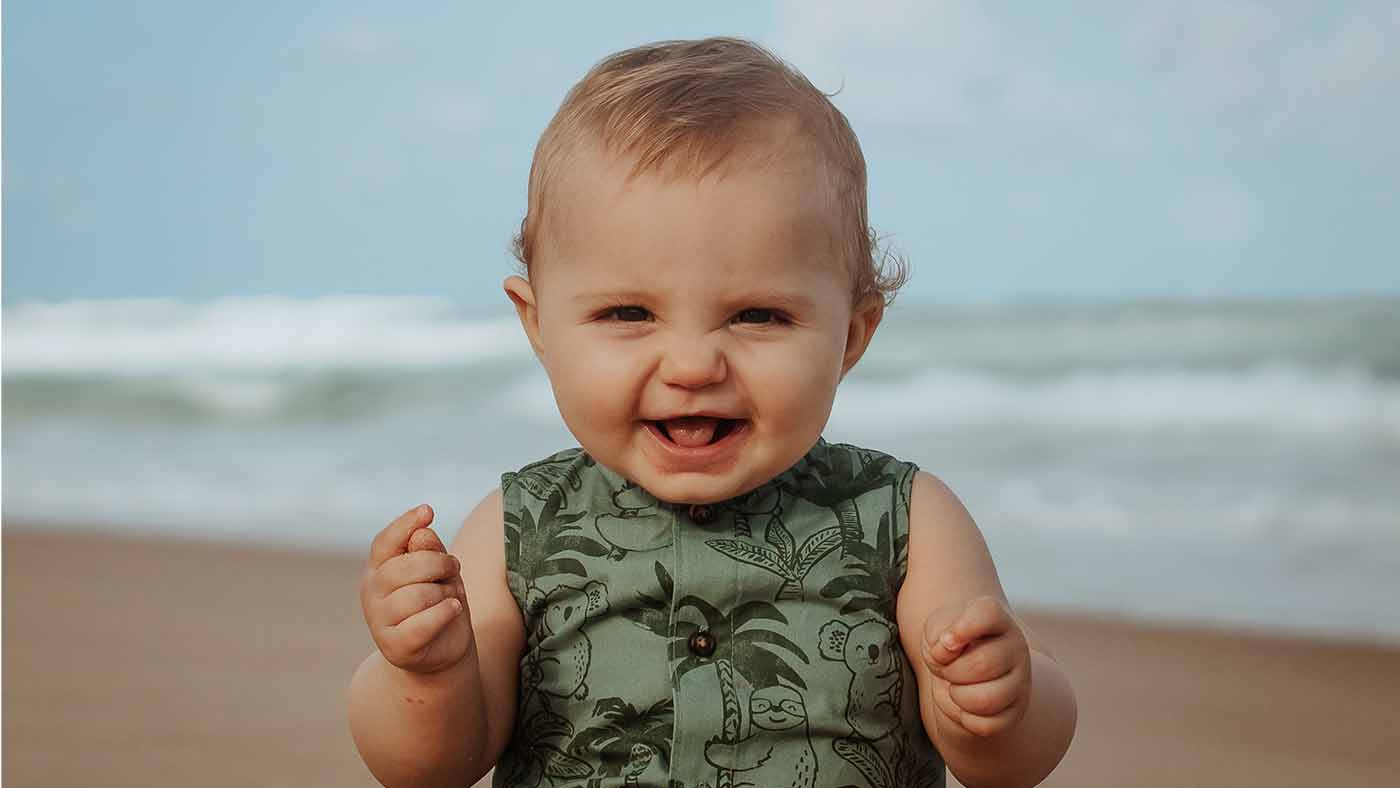Clowning around – your baby's budding sense of humour

Your baby may not be telling jokes just yet, but they will already be developing their wonderful sense of humour, fun and playfulness.
What is clowning?
Clowning is often non-verbal, silly and playful behaviour, and is an early way for babies and young children to share humour with others. It is often linked to teasing behaviour, and first signs of this may be your baby carrying out little actions that turn usual interactions and expectations on their head. For example, they may offer you a toy, and then pull it away as you reach out for it.
What clowning might you spot?
From early on, you will probably notice your baby doing little things to encourage a reaction from you. This could be things like mimicking facial expressions, playfully grabbing someone’s hair or using objects in funny ways – such as putting objects on their heads. Absurdity from babies is often funny for adults, so they will carry on doing these actions to make you laugh.
Purposeful and playful teasing
As babies get a little older, they will begin to carry out even more purposeful actions that “tease” adults they are close to. They will start to play and experiment with social cues and expected actions. This might come in the form of calling out the name of one parent when looking at or in the presence of another, pretending to overstep boundaries (such as mimicking drinking an adult’s hot drink or acting as though they are going to take their food), or opening arms to hug someone then playfully rejecting them as they go to hug back.
Humour, clowning and teasing can help bonds
Most adults who have close friendships share little in-jokes and special references, and clowning and teasing from babies and young children is an early display of a close relationship. This is also a way that young children show who they are comfortable around, as this behaviour can sometimes have a risky response!
Further reading
https://pure.port.ac.uk/ws/files/2450722/Teasing_and_Clowning_in_Infancy.pdf